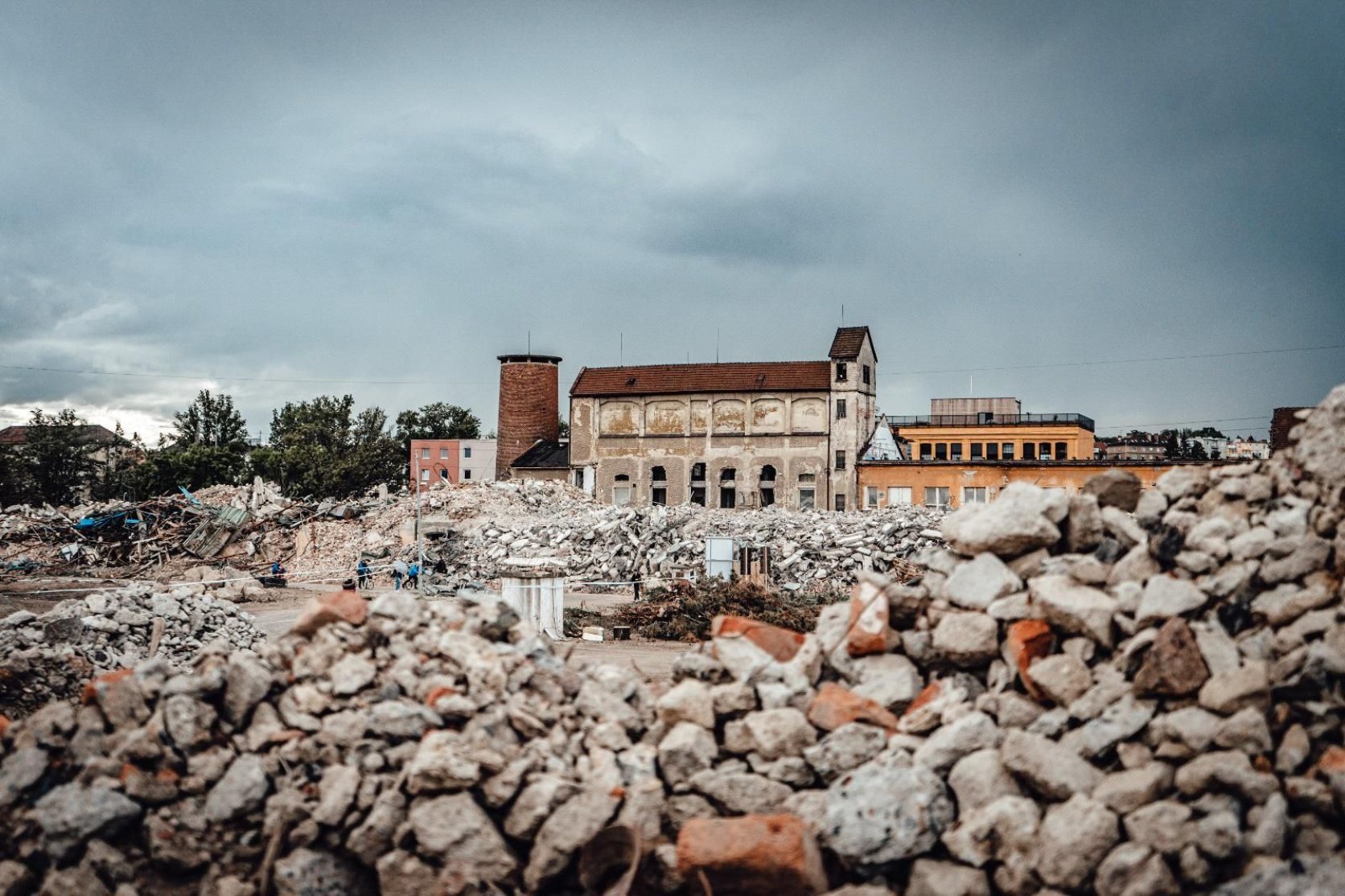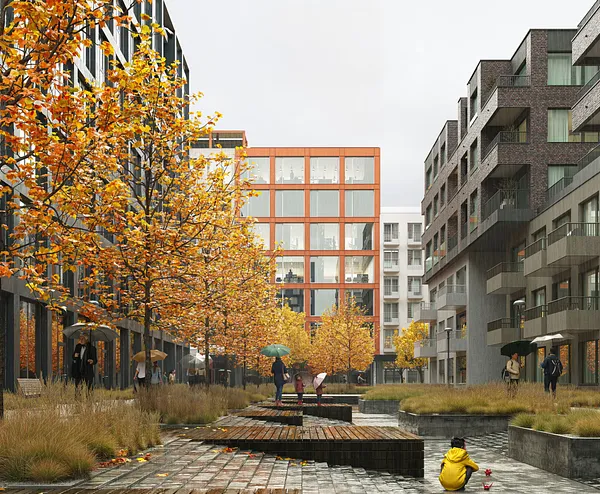In the second half of the 1990s suburbanisation started here. This was the trend to build housing on the outskirts of cities. In the case settling the peripheral areas of a city, specifically residential suburbanisation. In addition to this, in the context of urban expansion, we’re also talking about commercial suburbanisation, which involves the construction of commercial or industrial zones on the peripheries, outside the compactly built area. Often it entails the development of the aforementioned greenfield zones, which are usually more available than brownfield sites, whether in terms of easier management, permitting, finance or time.
The process of suburbanisation is also referred to as disorderly or random urban expansion, which is associated with a number of negative impacts. These negatives have long been perceived by the City of Brno, which is gradually responding to them by trying to facilitate the process of transforming existing unused and decaying areas – brownfield sites – directly in the city. It seeks to adapt the spatial plan and appropriately set up cooperation on the development of these territories with investors. Thanks to this, the urban environment in Brno has undergone significant change over the last thirty years in connection with development projects.
Story of suburbia – expensive traffic, congestion, lack of civic amenities
One of the negative impacts related to construction on the peripheries is the increase in investment costs of the city, which must be spent to complete utility networks, infrastructure, and the expansion of city services such as post office, public transport, emergency services, etc., and consequently also the increase in the operating costs of providing these services. These costs are reflected in the fees we all have to pay. This topic leads us to a kind of ideal population density that affects the quality of the city. Simply put, the higher the population density of a city, the more efficient it is to spend the city’s investment and operational resources to cover services per unit inhabitant.
Another hot topic is sustainable urban mobility. Existing infrastructure has generally not been prepared for the significant increase in individual car traffic seen over the last twenty years. Especially the daily transfer of residents from the emerging outskirts of Brno to work and schools in the city centre or, worse still, transfer through the city centre to a destination on the other side of Brno. The result is traffic jams, sections of road that are overwhelmed at rush hour. Let’s also throw in the carbon footprint associated with the daily need to use a car and, last but not least, the time wasted getting from A to B. You just don’t want this!
Lack of amenities, absence of shops, services or leisure activities. This is another obvious problem with residential projects on the outskirts of cities. This is due to a lack of purchasing power. The creation of multifunctional projects here is economically unsustainable: there is not sufficient concentration of inhabitants to generate demand for shops and other services. And so, in these cases, new residents are dependent on meeting their needs closer to the centre. Here we go again, the necessary dash across town, the congestion, the time spent on the road.
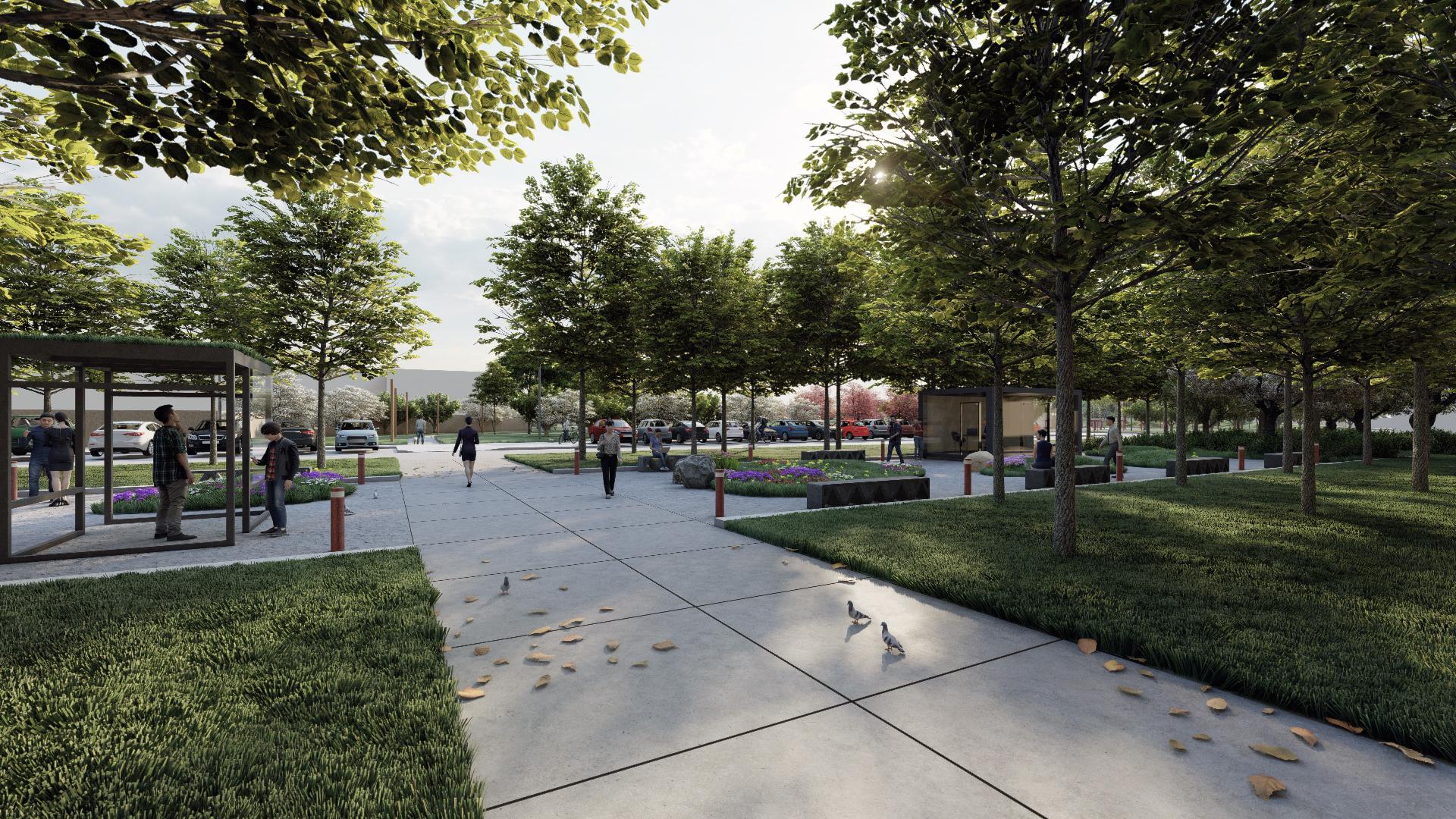 | 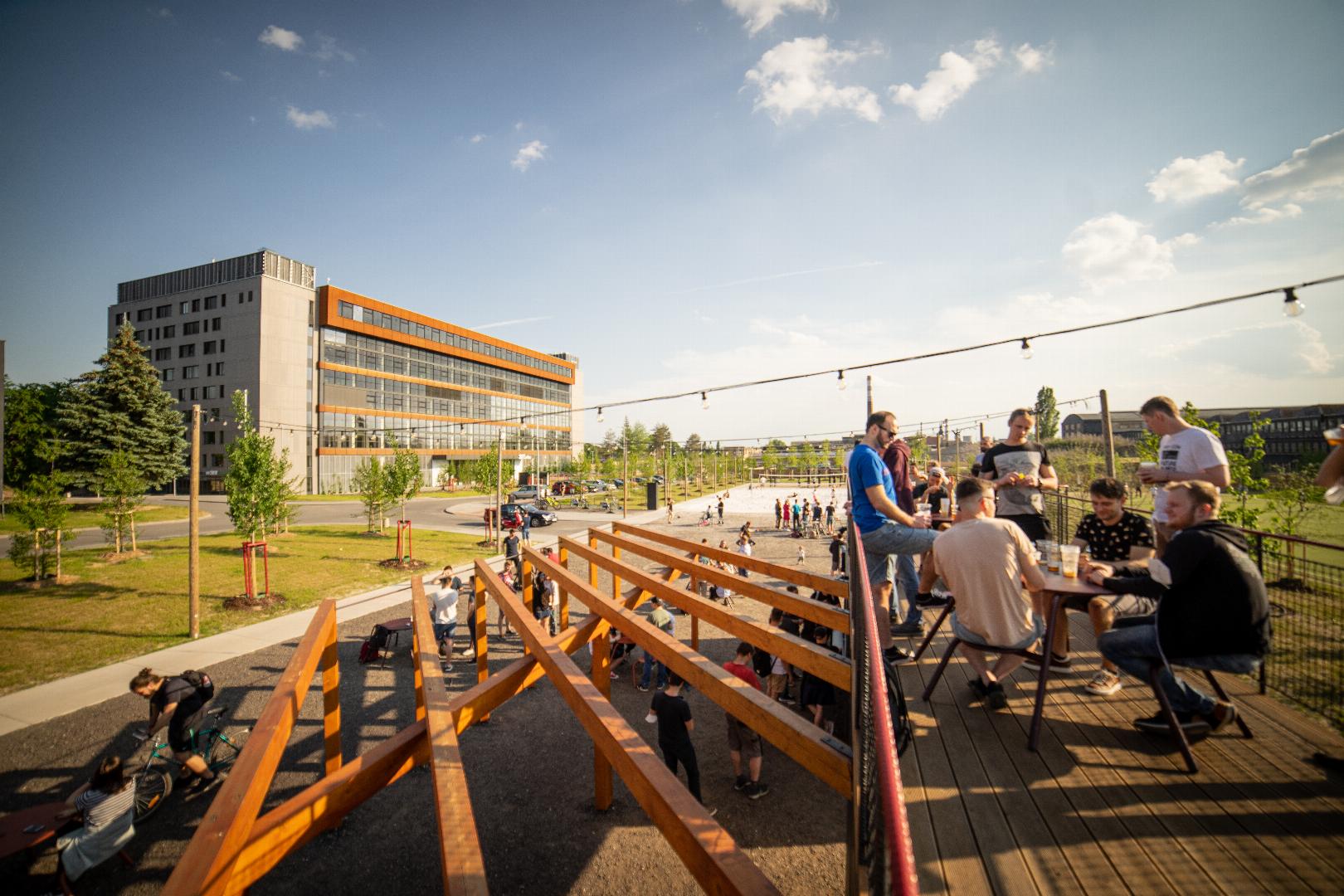 |
| In Nová Zbrojovka everything needed will be found within a 15-minute walk | Revitalisation of the space in front of ZET.Office (multi-sports venue Amenities Park) |
Nová Zbrojovka – a town of short distances
In contrast to suburbia, imagine that you have housing, work, school and kindergartens, a choice of several public transport links, but also nature and the offer of essential services and leisure activities literally around the corner. And that is exactly what Nová Zbrojovka, a so-called town of short distances, represents. It means you have everything you need within a 15-minute walk. When planning amenities, we take into account local demographic trends and priorities, and determine the preferences of local residents. As a result, we provide amenities not only for future residents of Nová Zbrojovka, but also supplement services missing in the surrounding area. Nová Zbrojovka will thus be a neighbourhood where you can do without a car, the need to get across town and the inevitable delays on the way. All this corresponds to our philosophy of sustainability for Nová Zbrojovka, based on minimising environmental impacts related to, among other things, a preference for low-emission transport instead of car usage.
Brownfields lead the way!
Over the past 17 years, the area of brownfield sites in Brno has fallen from 516 to 287 hectares and the largest number of brownfield sites is currently concentrated in the central Brno-střed district, mostly comprising so-called mini-brownfields. As far as the largest brownfield area in Brno is concerned, transforming the area of our Nová Zbrojovka has top priority.
It’s great that the potential of and interest in brownfield revitalisation is growing, despite the fact that the process of transformation of such areas is significantly more complicated than greenfield construction. As analyses indicate, the most common barriers are the demands of the process, dealing with the original buildings, finances and time. Zoning, property relations and the necessary conditional infrastructure are cited as major hitches.
 |
The planned reconstruction of the historic Kotelna (former boiler house), around which a central square will be built, a place for cultural and social events, as well as for taking a rest or a stroll
Yes, we could tell you about the “nutritious” process of preparing the revitalisation of a brownfield! The hitch in the form of the Brno zoning plan, at that time a legacy from 1994, was solved by a local change in 2021. A minor miracle, thanks to which we’re no longer limited by building only factories, as set out by the original plan. Crucial, you’ll agree, for the creation of a new city district. As close cooperation with the city authorities is necessary for the development of such a large area, more than a year of negotiations with Brno’s representatives followed, resulting in a contract defining the crucial milestones for the creation of Nová Zbrojovka. For example, connected infrastructure, roads and pavements, sewerage, public amenities, elementary school and kindergarten, the interconnection of public transport, flood protection measures and others. And then followed the process of applying for building permits, requiring necessary statements from all related authorities, and – without exaggerating – the thousands of opinions, decisions and approvals since then. It’s clear that this process may discourage many developers, who will choose to develop other sites, such as greenfields. But we know that fortune favours the brave, certainly the resilient and patient, and we’re sure that the development of brownfield sites in the wider city centre makes more sense and is a more sustainable vision.
Being central doesn’t mean no greenery! The opposite.
When it comes to living downtown, most potential buyers say goodbye to relaxing under the trees, having picnics on the grass, walking their dogs off the concrete. But we don’t do quid pro quo. According to the Masterplan, the space of Nová Zbrojovka is designed in such a way that almost three hectares will consist of greenery and parks. A sports and relaxation park will dominate an entire two hectares along the Svitava River. Another significant concentration of greenery in the form of smaller trees (such as elms and alders, which will provide shade and space for sitting and relaxing) up to mature plane trees will then be conceived in the central part of the more than hectare-sized square. Tree-lined streets are also envisaged, and we strive to maximise green and recreational spaces for users in all residential or commercial buildings. We know for certain that our new brownfield will gradually turn green.
To nature, with the river as a bonus
Nová Zbrojovka, along with 10 other brownfield sites, is part of the renowned industrial trail around the Svitava River. It examines the production zone along the banks of Svitava, which is part of the rich history of industrial Brno. In the past, the river was a source of energy for these industrial buildings. You can walk the trail and learn more about the original industrial buildings by consulting the 11 installed outdoor panels. In this example, the positive transformation of brownfield areas is beautifully visible. Not only is life returning to industrial sites and individual buildings after decades, but in the case of Nová Zbrojovka, the river, formerly part of a closed-off production area, is also being opened up after more than 100 years.
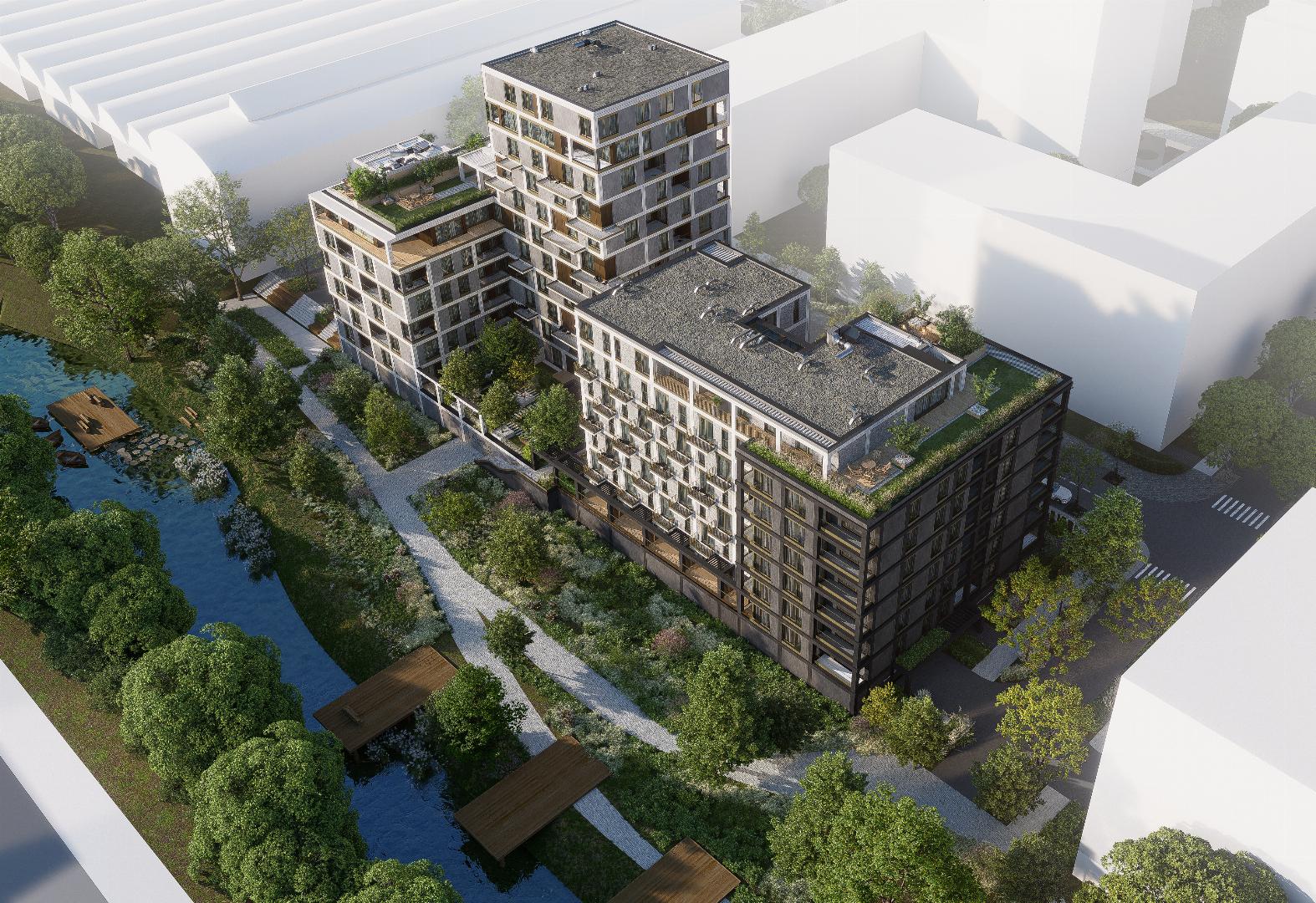 | |
| River access as part of the two-hectare sports and relaxation park | The cleared site of old Zbrojovka |
No need to fear. It’s clean!
A common bugbear of brownfields is also soil contamination – the pollution of former industrial sites due to original production. This is also one of the reasons why it’s easier to opt for a greenfield for development. It means a large amount of initial financial capital must be spent to clean up the brownfield site. And not only finances are essential, let’s add the time required for this process, because the cleaning and remediation itself can take up to 5 years, as was the case here. It means that after 5 years and considerable investment, we’re still at the so-called point zero.
We’ve passed this stage and now we can claim in good conscience that our area is clean. In addition, for several years after cleaning, this status is checked at regular intervals through post-remediation monitoring.
So the question is, under comparable financial conditions, would you choose to live on a revitalised brownfield site downtown or on a built-up greenfield periphery? If you answered downtown, we’ve good news for you: this year we’re starting construction of the first residential block! Leave us an e-mail in the section below the article and we’ll let you know when the sale goes live. Let you be the one who starts living in a green 15-minute neighbourhood where everything is within reach.
